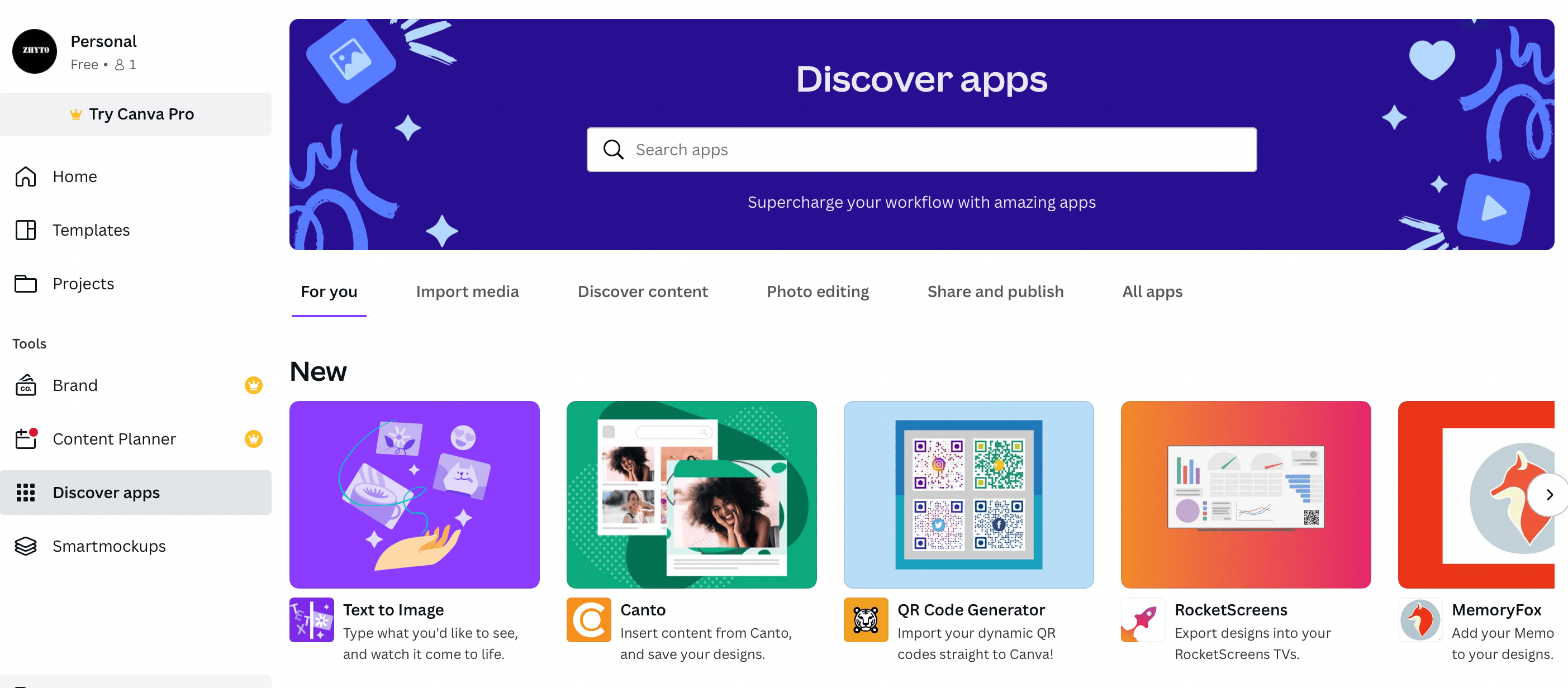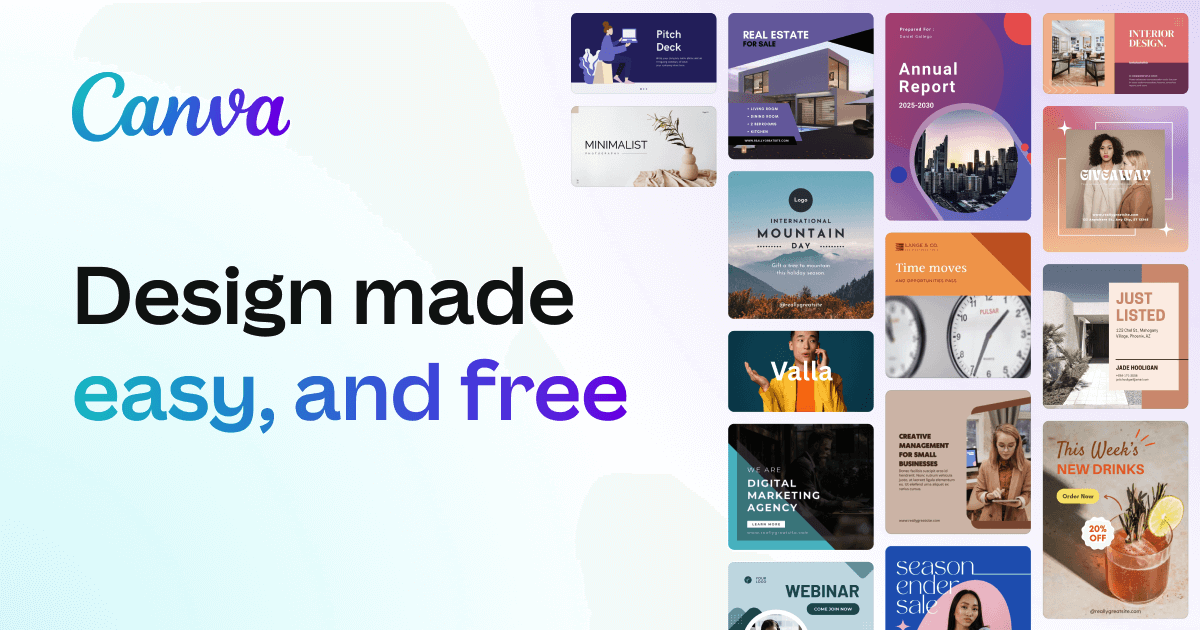What is Canva? A Complete Guide to the Design Tool Everyone is Talking About

Introduction: Why Canva is More Than Just a Design Tool
If you’ve spent any time in the digital space, chances are you’ve heard of What is Canva. Whether it’s marketers making social media graphics, students preparing presentations, or entrepreneurs designing logos, Canva has found its way into nearly every corner of online content creation. But what is Canva exactly, and why has it become such a powerful name in the design world?
At its core, Canva is an online graphic design platform that simplifies the entire creative process. It’s built for people who may not have formal training in design but still want professional-looking visuals. What used to take hours in complicated software like Photoshop can now be done in minutes with Canva’s drag-and-drop interface. The platform empowers everyday users to become designers without the steep learning curve.
The beauty of Canva lies not just in its simplicity but also in its versatility. From creating a quick Instagram story to producing a polished business presentation, the platform covers almost every visual need imaginable. It has grown from a small startup to a global brand with millions of users, and its influence continues to expand. To really understand Canva’s impact, let’s break it down step by step.
What is Canva? The Basics Explained

What is Canva is an online-based graphic design tool launched in 2013 by Melanie Perkins, Cliff Obrecht, and Cameron Adams. Its primary purpose is to make design accessible to everyone, regardless of skill level. Traditionally, design software required technical knowledge, expensive licenses, and hours of practice. Canva disrupted that model by offering a free, user-friendly platform with templates that can be customized in seconds.
The platform runs directly in your web browser or as a mobile app, which makes it accessible to anyone with an internet connection. No bulky downloads or complex installations are needed. You simply log in, select a template, and start designing. The drag-and-drop system is the heart of Canva—it allows users to move images, text, and shapes around the canvas with complete ease.
What’s more, Canva isn’t limited to one type of content. It can handle everything from business cards, flyers, and resumes to YouTube thumbnails, social media posts, and even videos. This wide variety makes it appealing to students, professionals, and hobbyists alike. Instead of needing five different apps for different tasks, What is Canva rolls them into one platform.
The Key Features That Make Canva Stand Out
One of What is Canva strongest selling points is its extensive library of templates. With over 250,000 free templates available (and millions more in the premium version), users rarely have to start from scratch. Templates provide a professional foundation, and you can tweak them to suit your brand or personal style. This saves time and removes the stress of designing from a blank page.
Another highlight is Canva’s library of design elements. The platform offers millions of stock photos, icons, fonts, and graphics, many of which are free. For premium users, Canva Pro unlocks access to even more exclusive resources. The library ensures that even if you’re not a photographer or illustrator, you still have high-quality visuals to work with.
Collaboration is another feature that sets Canva apart. Teams can work on the same project in real-time, similar to how Google Docs works for documents. This makes Canva ideal for businesses, schools, and organizations where multiple people need to contribute. Combined with its cloud storage, projects can be accessed and edited from anywhere.
Canva for Different Types of Users
What is Canva isn’t just for one type of audience—it adapts to various needs. For entrepreneurs, it offers an affordable way to design logos, product packaging, and promotional materials. Instead of hiring an expensive designer for small tasks, business owners can create their own visuals with Canva in minutes.
Students and educators also benefit greatly from Canva. Presentations, posters, infographics, and class materials can be created with little effort. Many schools even encourage students to use Canva as a creative learning tool. Its simplicity makes it easy for younger users while still powerful enough for academic projects.
For content creators and influencers, Canva is a must-have. Social media thrives on visual content, and Canva’s pre-sized templates for platforms like Instagram, TikTok, and YouTube make content creation quick and efficient. Even video editing is now possible on What is Canva , which means creators can handle almost every aspect of their brand in one place.
Canva Free vs. Canva Pro: What’s the Difference?
While What is Canva free plan is powerful enough for casual users, Canva Pro takes things to another level. The free version offers thousands of templates, access to a library of photos and graphics, and basic editing tools. For many, this is more than enough to handle personal or small business needs.
Canva Pro, on the other hand, is designed for those who need more flexibility and branding power. With Pro, you unlock access to over 100 million premium stock photos, videos, and graphics. You also gain features like brand kits (where you can save your logos, colors, and fonts for consistency), background remover tools, and advanced resizing options (called Magic Resize).
Another Pro advantage is team functionality. If you’re working with colleagues, Canva Pro allows smoother collaboration, shared brand kits, and approval workflows. For businesses and serious content creators, the investment in What is Canva Pro is often worth every penny.
Why Canva Became So Popular Worldwide
What is Canva popularity isn’t just luck—it’s the result of meeting real-world needs. In a world where visuals dominate digital communication, people needed a tool that was fast, affordable, and user-friendly. Canva filled that gap perfectly. It democratized design by making it accessible to anyone with an idea, not just trained professionals.
The rise of social media also played a huge role. Platforms like Instagram, Facebook, and TikTok rely heavily on eye-catching visuals, and Canva became the go-to solution for producing them. Instead of outsourcing to expensive designers or struggling with complicated software, users found that Canva let them produce professional-quality content instantly.
The COVID-19 pandemic further accelerated Canva’s growth. As schools and businesses moved online, the need for digital presentations, marketing visuals, and virtual communication tools skyrocketed. Canva was already positioned as an easy-to-use platform, making it the natural choice for millions of new users during that period.
The Limitations of Canva You Should Know
While What is Canva is incredibly powerful, it does have limitations. For one, it’s not a replacement for professional software like Adobe Photoshop or Illustrator. Graphic designers who need advanced features such as vector editing, 3D design, or detailed retouching will find Canva restrictive. It’s best for general design tasks but not for highly specialized projects.
Another limitation is originality. Since millions of people use the same templates, it’s possible to see similar designs across the internet. To avoid blending in, users should customize their templates extensively instead of relying on them as-is. This ensures that designs look unique and tailored rather than generic.
Finally, What is Canva depends on internet connectivity. While the mobile app allows some offline functionality, most features require an online connection. This can be inconvenient for users in areas with poor internet access. However, given the global shift toward cloud-based platforms, this drawback is relatively minor.
The Future of Canva: Where It’s Headed
What is Canva shows no signs of slowing down. The company continues to innovate by adding new features like video editing, website creation, and AI-powered tools such as text-to-image generators. As the demand for visual content grows, Canva is expanding beyond static graphics into dynamic and interactive design.
Its future also seems tied to business solutions. Canva has already introduced enterprise-level plans that cater to large organizations. This means the platform is no longer just a tool for individuals—it’s becoming a complete design ecosystem for companies worldwide.
With its constant updates and user-first approach, Canva is likely to remain one of the most dominant design tools for years to come. Whether you’re a beginner or a professional looking for efficiency, Canva’s future is as bright as its growth has been so far.
Conclusion: Why Canva is Worth Trying
So, what is Canva? Simply put, it’s the bridge between professional design and everyday creativity. It empowers anyone to create stunning visuals without needing expensive software or years of training. From personal projects to global business campaigns, Canva has proven itself as an essential tool in the modern digital world.
Its ease of use, affordability, and versatility make it stand out among other design platforms. While it has some limitations, the benefits far outweigh them for most users. Canva isn’t just another app—it’s a movement that reshaped how people think about design.
If you haven’t tried Canva yet, now’s the perfect time. Whether you want to design a wedding invitation, launch a startup brand, or simply make your social media posts look better, What is Canva has everything you need to bring your ideas to life.
